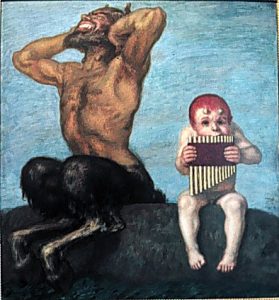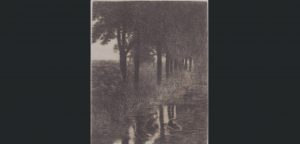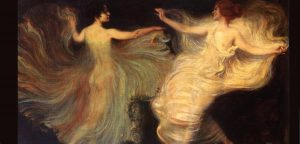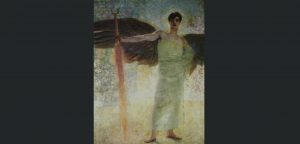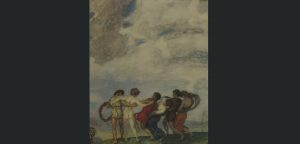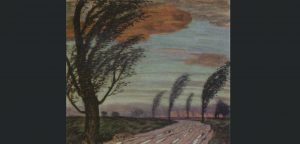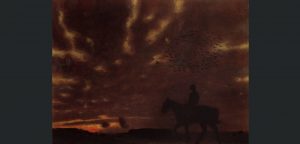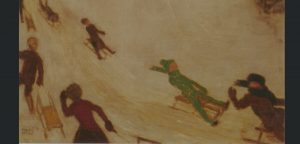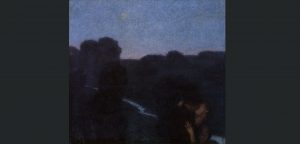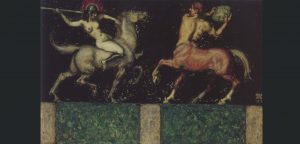He was born on the 23rd of February in the Bavarian village of Tettenweis into the family of a village miller.
1863 - 1928
Franz von Stuck

description
A German painter, sculptor, graphic artist and decorator, one of the leaders of Symbolism in the visual arts of Europe in general and Germany in particular.
He painted genre pictures and portraits actively using mythological scenes. He became the organizer of the “Munich Secession”, which had the greatest success in Europe after Paris Salons. He founded the magazine “Jugeng”, from which the name “Jugendstil”, commonly known for the German style of art nouveau, was derived. For his merits and achievements, the son of a peasant and miller received a noble title, became an honorary doctor of the Technical University of Munich. There is an art museum at the villa that was built and equipped by von Stuck.
Key ideas:
– As an artist, F. von Stuck at the beginning made himself known for his peculiar caricatures and drawings of fantastic style, made in a somewhat rigid manner. They appeared in the periodicals “Fliegende Blätter” and “Fliegenden Blätter”, were published in separate series – “Allegories and Emblems”, “Twelve Months”, etc.
– Creating pictorial paintings of allegorical (either biblical or mythological) content, the artist combined the quirkiness of mystical and symbolic design with the merits of precise drawing and the harmony of colors chosen. This caused opposite opinions of critics and viewers.
– Characteristic for symbolism, the theme of “fatal” (often erotic) attraction, the bacchanalia of demonic irrational elements received from Stuck a particularly bright, sometimes brutal execution, as in “Fighting Fauns” (1889, New Munich Pinakothek).
– Images of war and violence, “vamp” women such as Salome, became archetypal in Stuck’s work (the canvas with the same name, created in 1906, is in the F. von Lenbach’s House-Museum). The predominant and very effective element of the artist’s compositions is a reflection of the psychology of horror. An unknown monster, a half-lynx and half-diva grips the hero of the painting in a deathly embrace; then a giant boa wraps itself around the body of the heroine, or sirens beckon to death.
– As a secessionist, Stuck rejected aspects of academic art; while for most painters a woman remained an idealized object, he brought in will and power in his female images. His heroines demonstrate amazing control over what is happening, even if they take a traditional and decorative pose.
– As a portrait painter, von Stuck, along with almost traditional images (“Self-portrait with his wife”, portraits of his daughter) uses symbolic subjects. The master depicted famous actress and writer Tilla Durieux as Circe.
– Franz made decorative spectacular frames for paintings; with full force unfolded his talent of a designer, decorator and sculptor when constructing and designing his own villa, which later became a museum and sight of Munich.
1863
1881 - 1884
1885
1889
1892
1893
1895
1900
1906
1928
The birth of the artist
Studied at the Polytechnic and the Royal School of Arts and Crafts
Studied at the Polytechnic and the Royal School of Arts and Crafts (art and craft school).
Attended the Munich Academy of Arts
Attended the Munich Academy of Arts.
He got a gold medal
For the first time showed the paintings “Guardian of Paradise”, “Innocence” and others at the exhibition at the “Glass Palace”. He got a gold medal.
He became one of the founders and the president of the Munich Secession
He became one of the founders (together with Wilhelm Trubner) and the president of the Munich Secession, creating posters for the exhibitions of the association; the symbol of Secession was F. Stuck’s composition with Athena-Pallada.
"Sin"
Received a gold medal in Chicago at the World Exhibition for the painting “Sin”.
He worked as a professor of painting at the Munich Academy of Arts
He worked as a professor of painting at the Munich Academy of Arts.
Stuck received a gold medal at the World Exhibition in Paris
For furniture created for his villa, Stuck received a gold medal at the World Exhibition in Paris.
He was awarded the Order of Merit of the Bavarian Crown
He was awarded the Order of Merit of the Bavarian Crown by the government and was knighted. He got a nobility title.
He became an honorary doctor of the Technical University of Munich
He became an honorary doctor of the Technical University of Munich.
The artist died on August 30, 1928 in Munich. He was buried in the Waldfriedhof cemetery and immortalized with the inscription “the last prince of art in the great days of Munich”.

